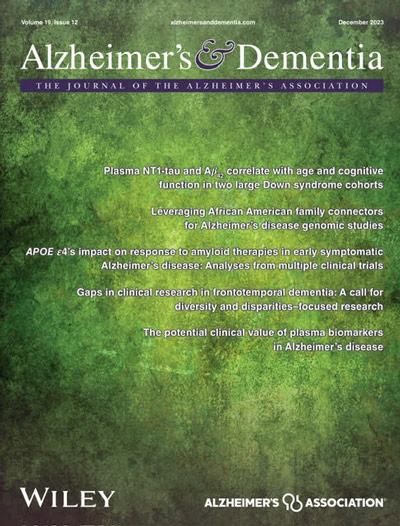Voluntary wheel running exercise improves sleep disorder, circadian rhythm disturbance, and neuropathology in an animal model of Alzheimer's disease
Abstract
INTRODUCTION
The sleep–wake cycle and circadian rhythm disturbances are common in Alzheimer's disease (AD). However, it is not known if exercise has any benefit for the sleep disorders in AD.
METHODS
We conducted a 2-month voluntary wheel running (VWR) exercise (Ex) in an animal model of AD (APPSWE/PS1dE9 mice). We assessed behavioral circadian rhythm, sleep structure, circadian clock genes, cognitive function, and neurodegeneration in the suprachiasmatic nucleus (SCN), the hippocampus, and the cortex.
RESULTS
After VWR exercise in the AD mice, the rapid eye movement sleep was increased by 89%. The levels of circadian clock genes were significantly changed (brain and muscle arnt-like protein 1 [BMAL1] and retinoic acid receptor-related orphan receptorsα [RORα] reduced by 45.7% and 36.4%, reverse erythroblastosis virusα (REV-ERBα) increased by 119%) in the SCN by immunofluorescence staining, with the mRNA levels were markedly altered (Bmal1 and Rorα decreased by 57% and 68%, Rev-erbα elevated by 79%) in the hypothalamus at Zeitgeber Time 1; phospho-tau 231 (p-tau231) was reduced by 35%, whereas vesicular GABA transporter (VGAT) was elevated by 38.7% in the SCN. In addition, ionized calcium binding adapter molecude 1 (Iba1), glial fibrillary acidic protein (GFAP), amyloid β (Aβ), and p-tau231 were significantly reduced in the hippocampus and cortex.
DISCUSSION
Our results demonstrate that VWR exercise improves sleep disorders, cognitive deficits, and neuropathology in AD mice.
Highlights
- Voluntary wheel running (VWR) exercise improves the behavioral circadian rhythm disorder and sleep structure disturbance in Alzheimer's disease (AD) mice.
- After VWR exercise, there is a significant change in the expression levels of circadian clock genes, and a remarkable reduction of tau phosphorylation and axonal damage in the γ-aminobutyric acid (GABA)ergic neurons in the suprachiasmatic nucleus (SCN).
- The levels of beta-site amyloid precurson protein cleaving enzyme 1 (BACE1) and glycogen synthase kinase-3β (GSK3β) are reduced in the hypothalamus after VWR exercise in AD mice.
- Furthermore, VWR exercise attenuates cognitive deficits, neuroinflammation, amyloid beta (Aβ), and phospho-tau protein accumulation in the hippocampus and cortex.


 求助内容:
求助内容: 应助结果提醒方式:
应助结果提醒方式:


